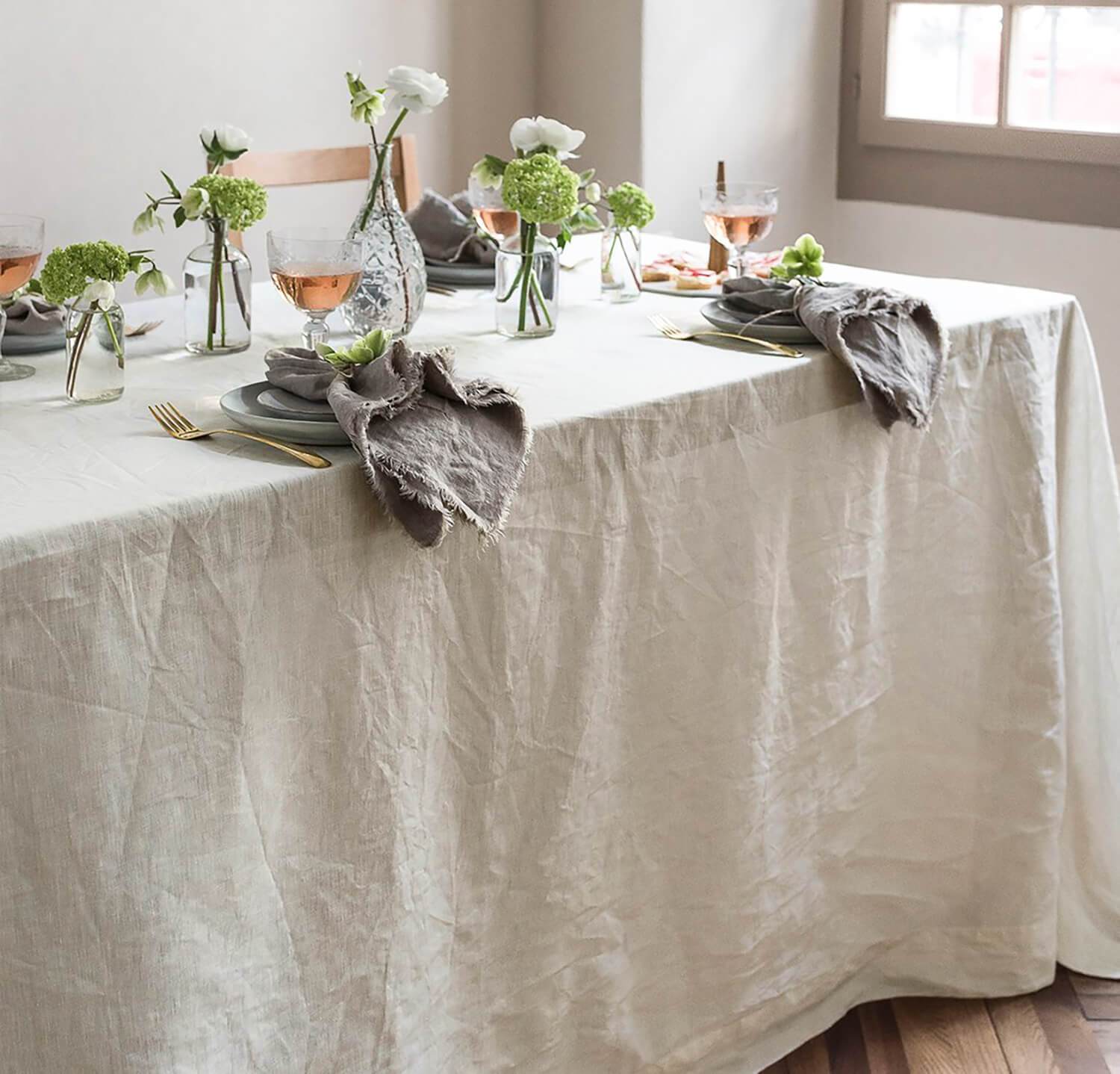Versatile Table Cloths: Styles and Fabrics for Any Event
Versatile Table Cloths: Styles and Fabrics for Any Event
Blog Article
Linen Fabric Technologies: Discovering Modern Trends and Creative Applications in Style and Textile Sector
From lasting production techniques to innovative weaving modern technologies, the evolution of linen is improving the landscape of the textile industry. As we dig into the worlds of innovative design applications and the appearance of linen blends and crossbreed materials, a brand-new phase unravels in which linen's role in future fabric innovations takes facility phase.
Lasting Practices in Linen Manufacturing
Sustainable methods in linen production have become significantly important in the textile sector's initiatives to reduce ecological influence and advertise honest sourcing approaches. Linen, a natural fiber stemmed from the flax plant, supplies a variety of advantages such as biodegradability, sturdiness, and breathability. However, standard techniques of linen manufacturing can involve considerable water intake, chemical use, and energy-intensive processes.
To resolve these obstacles, several fabric suppliers are adopting sustainable techniques throughout the linen manufacturing procedure. This includes sourcing flax from organic ranches that stay clear of dangerous chemicals and chemicals, applying water-efficient retting techniques to extract fibers from the flax stalks, and utilizing green dyes and surfaces. In addition, some companies are spending in renewable resource resources to power their production centers and decreasing waste via recycling and upcycling efforts.
Technological Developments in Linen Weaving
With the expanding emphasis on sustainable techniques in linen manufacturing, the fabric industry is currently observing a rise in technological advancements specifically intended at revolutionizing the art of linen weaving. These technologies are improving the method bed linen fabrics are generated, providing enhanced efficiency, top quality, and creative thinking in weaving techniques.
Among the vital technical advancements in bed linen weaving is the combination of electronic looms. These advanced looms are outfitted with software that enables complex and complicated designs to be woven with accuracy. By digitizing the weaving procedure, producers can accomplish greater consistency and accuracy in their bed linen materials.
In addition, improvements in yarn spinning technology have allowed the production of finer and more sturdy linen yarns - table cloths. This leads to softer and smoother linen materials that retain their high quality even after several uses and laundries
In addition, the advancement of environmentally friendly dyeing processes and surfaces for linen fabrics is getting grip. These sustainable methods not just minimize the environmental impact but also satisfy the enhancing consumer need for morally created fabrics.
Creative Layout Applications for Bed Linen
Innovative creative strategies are significantly forming the creative layout applications for bed linen in the fabric industry. Linen's all-natural aesthetic allure and capacity to mix with various other materials make it a preferred selection for developing one-of-a-kind garments and accessories that cater to the environmentally mindful consumer.
Additionally, designers are trying out linen in home decoration, utilizing its sturdy and breathable nature to craft trendy home furnishings such as curtains, bed linen, and furniture. The texture and drape of linen bring a feeling of sophistication and comfort to interior rooms, adding a touch of beauty to her comment is here modern-day homes.

Linen Blends and Hybrid Fabrics

Crossbreed fabrics, on the various other hand, take the principle of mixing a step additionally by integrating added components such as metal strings, recycled materials, or conductive fibers. These innovative fabrics not only increase the layout opportunities however also present functional aspects like conductivity, antimicrobial residential or commercial properties, or enhanced durability. Hybrid materials are significantly being utilized in different sectors, consisting of style, interior decoration, and technological fabrics, where the need for multifunctional materials gets on the increase.
Linen's Function in Future Textile Innovations

In the world of future fabric advancements, linen is expected to be a principal in the growth of advanced functional fabrics. Scientists and developers are exploring methods to boost bed linen's fundamental top qualities through technical innovations, such as integrating clever fabrics, nanotechnology, and efficiency coatings. These technologies aim to raise bed linen's efficiency attributes, making it suitable for a more comprehensive variety of applications, from activewear to safety garments.
Moreover, the combination of bed linen with various other natural or synthetic fibers opens endless possibilities for creating novel textiles with one-of-a-kind buildings and capabilities. By leveraging linen's features and discovering innovative blends, the fabric market is poised to present amazing developments that accommodate advancing customer requirements and sustainability demands.
Conclusion
To conclude, the expedition of lasting techniques, technical advancements, creative style applications, linen blends, and its function in future textile developments highlight the constant advancement of bed linen fabric in the modern style and fabric market. With a focus Visit Website on technology and creativity, the convenience and green nature of bed linen make it a useful product for manufacturers and designers alike, leading the means for further growths and developments in the field of textiles.
As we delve right into the realms of innovative design applications and the emergence of linen blends and hybrid materials, a brand-new phase unfolds in which bed linen's function in future fabric technologies takes center phase.
Exploring the fusion of bed linen with various other textiles has actually led to the emergence of cutting-edge blends and crossbreed textiles in the modern fabric sector. Linen blends supply a special mix of the qualities of linen with those of various other fibers, resulting in materials that possess improved residential or commercial properties such as raised longevity, boosted draping, and minimized wrinkling.The evolution of bed linen blends and hybrid textiles has established the phase for Linen to play a crucial role in driving future fabric innovations.In the world of future fabric technologies, linen is expected to be a key player in the growth of innovative useful materials.
Report this page